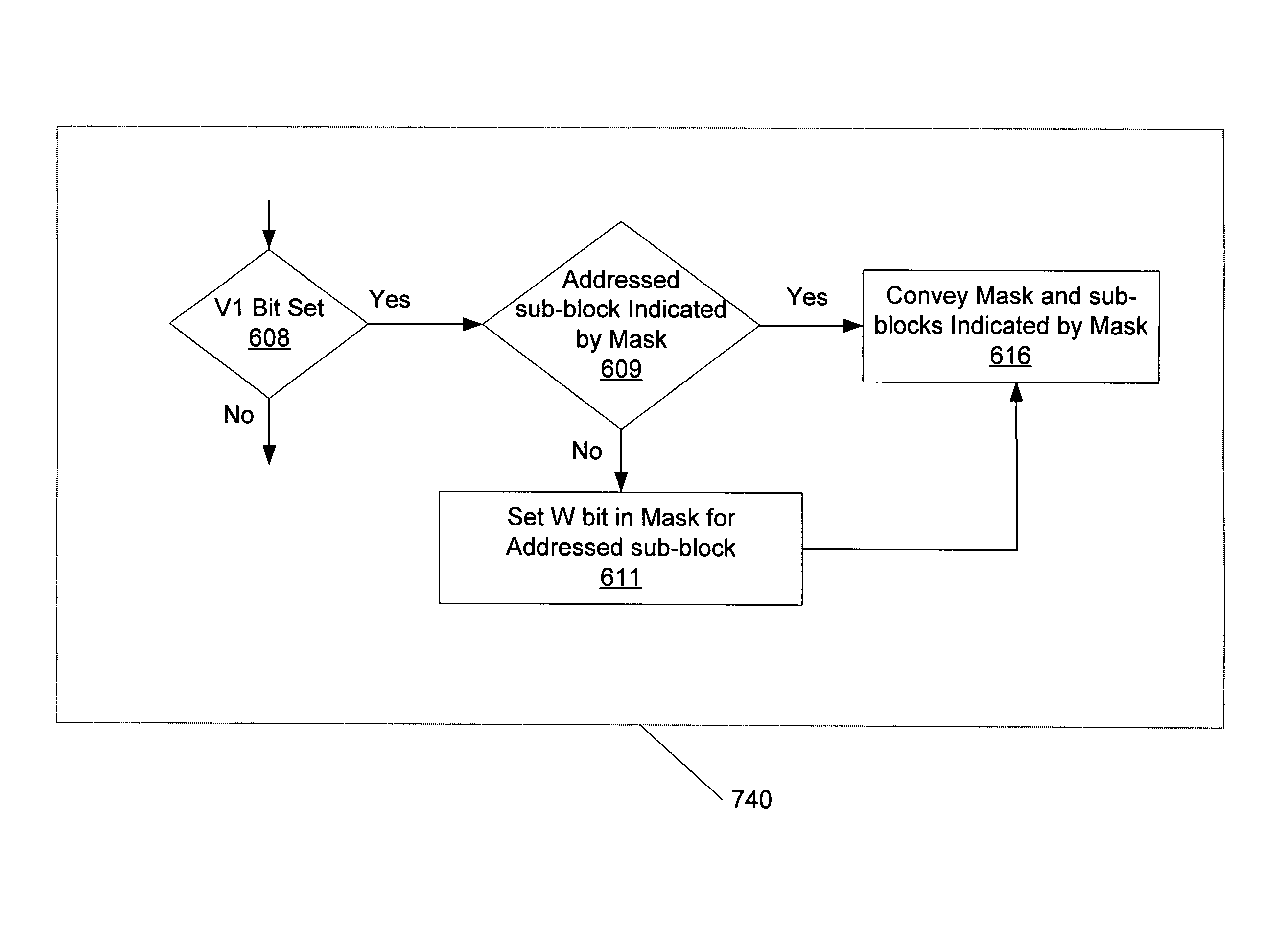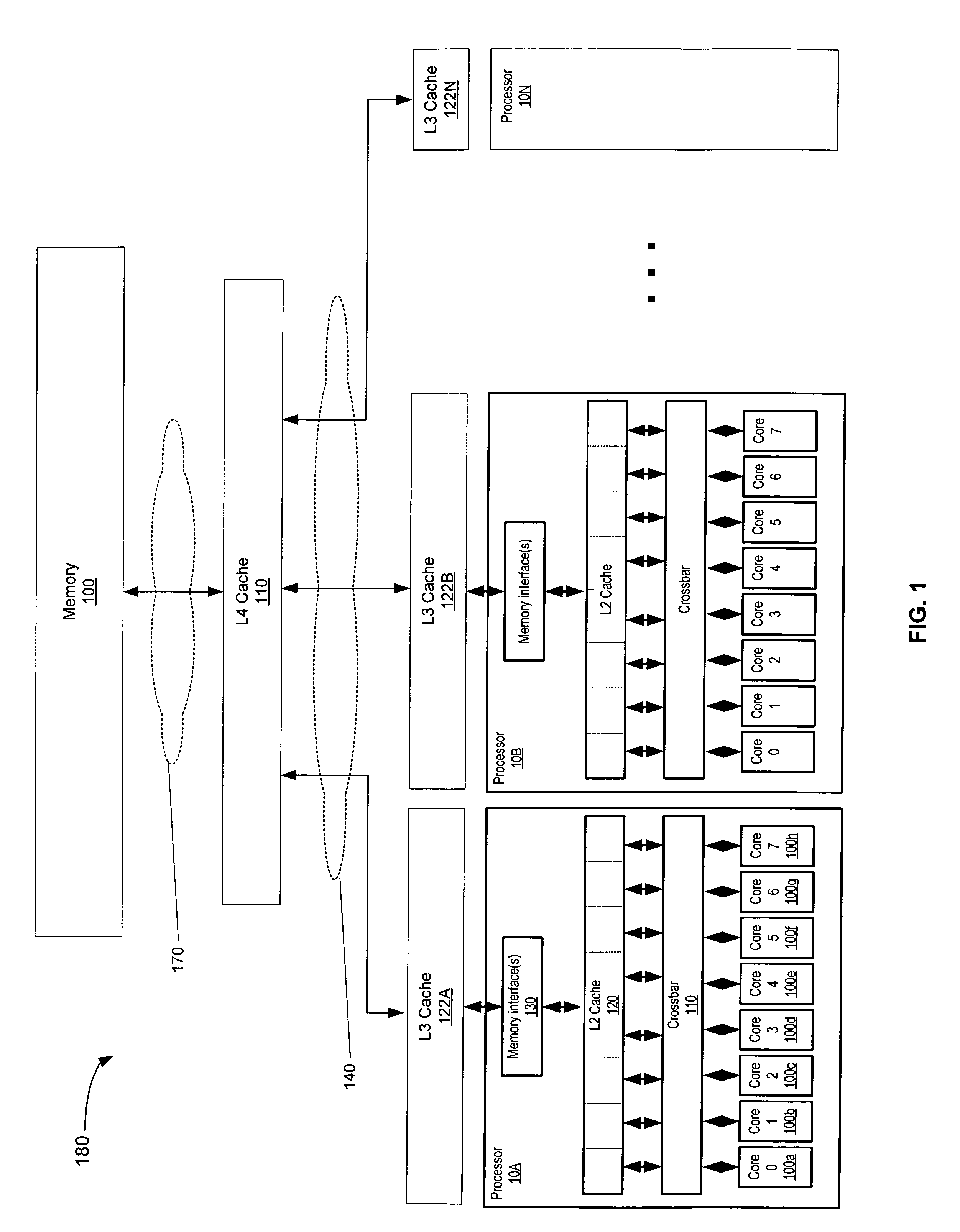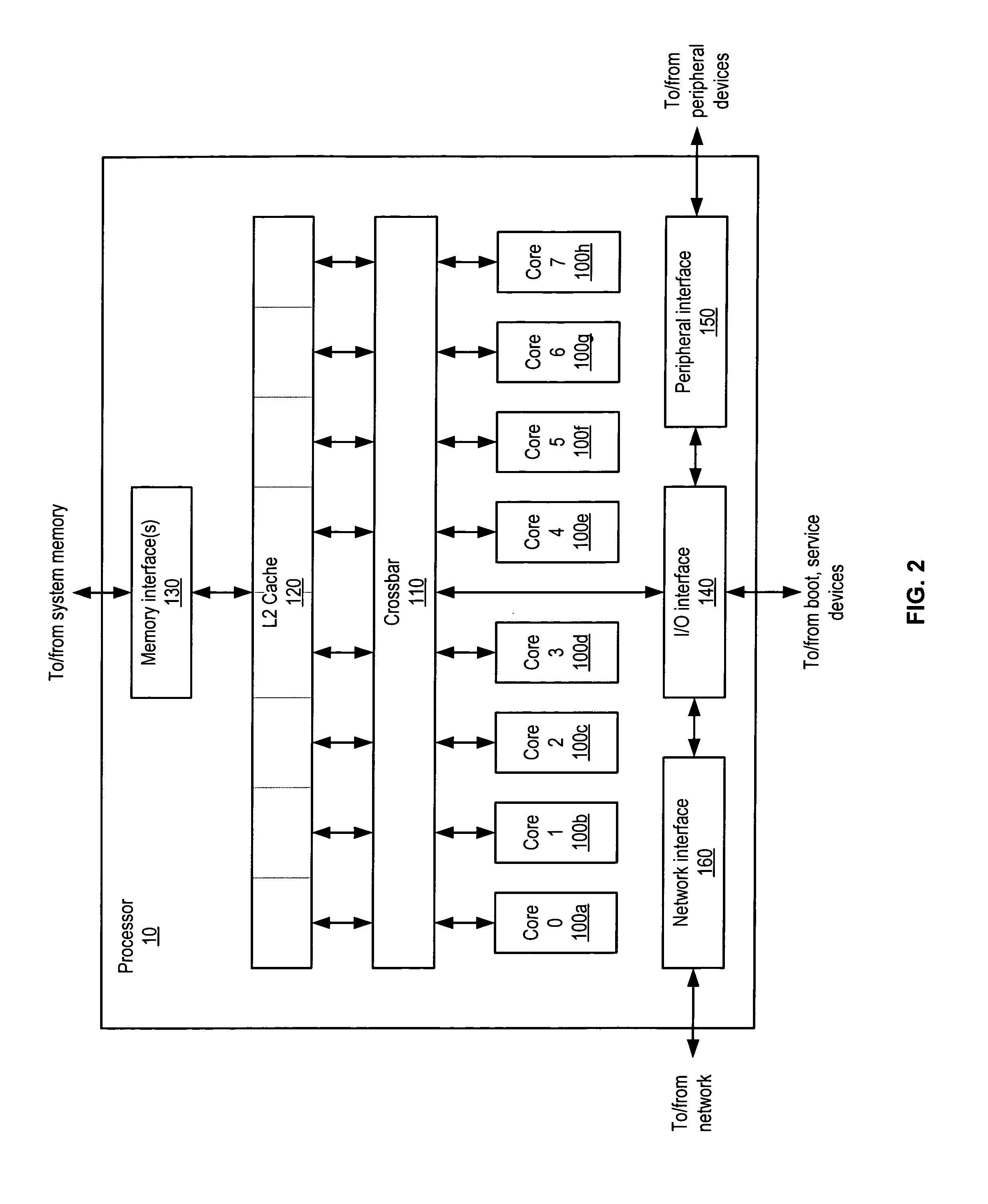Method and mechanism for cache compaction and bandwidth reduction
a cache and bandwidth reduction technology, applied in the field of memory systems in computer systems, can solve the problems of increasing the demands on the memory system, increasing the cost, and increasing the size of the main memory system
- Summary
- Abstract
- Description
- Claims
- Application Information
AI Technical Summary
Problems solved by technology
Method used
Image
Examples
Embodiment Construction
[0024]FIG. 1 depicts one embodiment of a shared memory computing system 180. In the embodiment shown, system 180 includes multiple processors 10A-10N. As shown, processor 10A comprises a plurality of processing cores 100a-h, which are also designated “core 0” through “core 7”. Each of cores 100 is coupled to a level 2 (L2) cache 120 via a crossbar 110. L2 cache 120 is coupled to one or more memory interface(s) 130. In addition, each processor 10 is coupled to a level 3(L3) cache 122A-N. Each L3 cache 122 is coupled in turn to a level 4(L4) cache 110 via interconnect(s) 140. Finally, the L4 cache 110 is coupled to a shared system memory 100 via interconnect(s) 170. Interconnects 140 and 170 may comprise point-to-point based, bus based, or other types of interconnects known in the art. In one embodiment, each of processors 10 is similarly configured, though embodiments which include differently configured processors are contemplated as well. Elements referred to herein with a particul...
PUM
 Login to View More
Login to View More Abstract
Description
Claims
Application Information
 Login to View More
Login to View More - R&D
- Intellectual Property
- Life Sciences
- Materials
- Tech Scout
- Unparalleled Data Quality
- Higher Quality Content
- 60% Fewer Hallucinations
Browse by: Latest US Patents, China's latest patents, Technical Efficacy Thesaurus, Application Domain, Technology Topic, Popular Technical Reports.
© 2025 PatSnap. All rights reserved.Legal|Privacy policy|Modern Slavery Act Transparency Statement|Sitemap|About US| Contact US: help@patsnap.com



